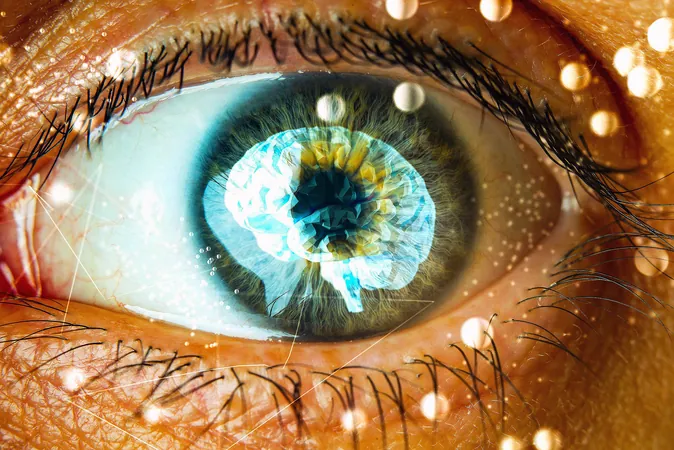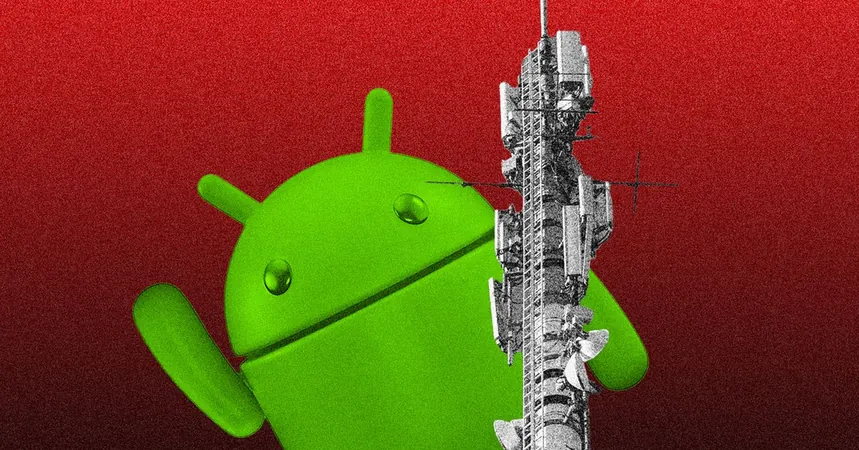
Unlocking the Secrets of Working Memory: How Your Pupils Hold the Key!
2025-05-27
Author: Wei Ling
The Intriguing Connection Between Eyes and Memory
Ever noticed how your brain juggles multiple thoughts at once—like remembering a grocery list while washing dishes? This remarkable mental juggling act is known as "working memory," and it plays a crucial role in our daily lives.
For years, scientists have been delving into the complexities of this mental system, and a groundbreaking study has just revealed a surprising link between our pupils and the efficiency of working memory.
Why Does Working Memory Matter?
Working memory is more than just a temporary storage for reminders; it’s essential for tasks like dialing a phone number, comprehending sentences as you hear them, and solving problems. This mental workspace only lasts seconds and can typically handle about 3 to 7 pieces of information at a time. Small improvements in its performance can dramatically enhance skills in reading, math, and decision-making.
Researchers have long compared working memory across individuals, finding significant variances attributed to genetics, stress levels, and even sleep quality. However, one factor that has been more elusive is real-time focus.
Eyes Reveal Focus Level!
A research team at the University of Texas at Arlington turned to a fascinating metric: the dilation of the pupils. Assistant Professor Matthew Robison and doctoral student Lauren D. Garner conducted a series of quick memory tests with 179 undergraduate participants while using eye-tracking technology.
Their findings were striking: those who performed poorly displayed less pupil dilation when faced with memory challenges, while top performers showed larger, more precise pupil responses linked to their memory recall.
The Science Behind Pupil Dilation
Pupil dilation is driven by the autonomic nervous system, which also controls heart rate under pressure. Previous studies showed this reaction intensifies during mentally demanding tasks, but this new research directly connects pupil size to memory accuracy.
Published in the journal Attention, Perception & Psychophysics, this study suggests that educators and specialists could one day utilize non-invasive eye sensors to detect when attention is waning, long before exam results indicate an issue.
Utilizing Eye Data for Better Learning
The relationship between pupil dilation and cognitive engagement aligns with a theory known as "resource allocation." This theory posits that the brain channels more energy toward tasks deemed essential, with pupil size reflecting this energy surge.
Distractions, like phone notifications or background noise, can drain these cognitive resources. Conversely, skills honed through activities demanding sustained attention, like playing a musical instrument or engaging in fast-paced video games, can enhance working memory.
Real-Time Feedback for Improvement
Imagine a classroom where pupil dilation could provide immediate feedback on a student’s attention levels, allowing for timely adjustments to instruction. Whether it’s slowing down, clarifying instructions, or incorporating breaks, this eye data could revolutionize teaching methods.
What’s more, the research indicates individuals who maintain consistent focus—evidenced by significant pupil dilation—excel at memory tasks.
Maintaining Your Brain's Health
While future technology might automate focus tracking, traditional strategies remain effective. Taking brief pauses during reading can help process new information, and segmenting data into manageable chunks—like breaking phone numbers into smaller parts—reduces cognitive load.
Mindfulness and aerobic exercises also show promise in enhancing working memory by promoting overall brain health.
Looking Ahead: Expanding the Research
This innovative study opens avenues for larger investigations into working memory across different demographics. Future research aims to explore whether these eye-response patterns hold true across various ages, cognitive challenges, and cultural backgrounds.
Ultimately, these findings highlight an astonishing truth: our eyes are more than just windows to our soul—they may also reveal the inner workings of our cognitive mind, helping us navigate the everyday tasks that keep life flowing.




 Brasil (PT)
Brasil (PT)
 Canada (EN)
Canada (EN)
 Chile (ES)
Chile (ES)
 Česko (CS)
Česko (CS)
 대한민국 (KO)
대한민국 (KO)
 España (ES)
España (ES)
 France (FR)
France (FR)
 Hong Kong (EN)
Hong Kong (EN)
 Italia (IT)
Italia (IT)
 日本 (JA)
日本 (JA)
 Magyarország (HU)
Magyarország (HU)
 Norge (NO)
Norge (NO)
 Polska (PL)
Polska (PL)
 Schweiz (DE)
Schweiz (DE)
 Singapore (EN)
Singapore (EN)
 Sverige (SV)
Sverige (SV)
 Suomi (FI)
Suomi (FI)
 Türkiye (TR)
Türkiye (TR)
 الإمارات العربية المتحدة (AR)
الإمارات العربية المتحدة (AR)